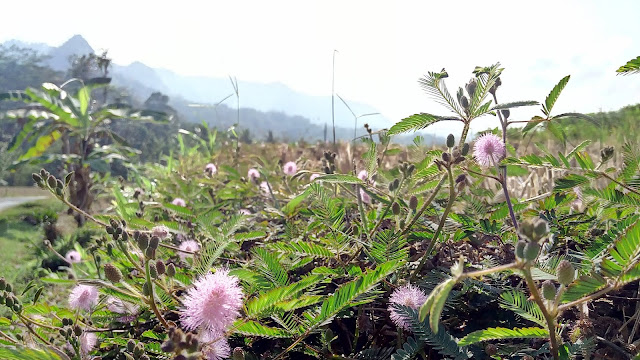Lately I heard Agri-Tourism Are Expanding in South East Asia (Mimosa Pudica)
Lately I heard Agri-Tourism Are Expanding in South East Asia (Mimosa Pudica)
Halo guys, long time no see, want to back again to my hobby to share and write something positive and useful to universe, sometime i think lately that maybe it's ok for sometime to relax and take it easy.
This time i want to share about "tourism industry that already in the saturation point", let we say cultural tourism, couple tourism, landscape tourism, historical tourism, heritage tourism, sport tourism, let me say there is a lot type/kind of tourism, but i think agri-tourism is the biggest that we need to think about, it's more than about food industry in previous time, but it's more about art of life and living, the era of how we consume and eat now more complex, human are the natural omnivora in different side of way, and we have a sense of good taste, that's why start from now i want to share and write just in the agri-tourism only until the last.
Let's we start talk about plantations / tree's / flowers etc, i'm sure it will exciting instead of other kind of knowledgeable tourism, this not only knowledgeable but this about "ourself".
And let me i introduce all of you about our star of the day : MIMOSA PUDICA / SENSITIVE PLANT / SLEEPY PLANT / ACTION PLANT / DORMILONES / TOUCH - ME - NOT / SHAMEPLANT / SHY PLANT / PUTRI MALU (Indonesia Language), and all document about video and picture i had captured in Indonesia, i will share it down below.
Mimosa Pudica
Mimosa pudica is a type of herbaceous that belongs to the legume family plant. It originates from south and central America, but it can be found in tropical and subtropical areas around the world today. Mimosa inhabits disturbed areas, orchads, pastures, parks, gardens and areas near the roads. It grows on a well-drained soil, in sunny areas or in a partial shade. Mimosa easily conquers new habitats and eliminatescnative species of plants. It is classified as invasive species in many countries in the world.
Mimosa Pudica Fact in Java land
- This plant can move - it's leaves fold up at night and also when touched.
- It has primitive nervous system of electrical impulses that trigger changes in cell water pressure at the base of leaflets.
Mimosa Pudica are semi - erect plant or ground hugging herb up to 80cm tall, often forming as a small bush. Heavily armed with small thorns. Leaves composite, sensitive and soft textured. Flowers pale pink to lilac, in stalked heads up to 2cm in diameter. Fruits pod-like up to 18mm long with prickly margins. Pollinated by wind and insects
 |
| Mimosa Pudica grows on the side of the rice field in Yogyakarta City (Borobudur and Prambanan Tour) |
Agricultural Impacts.
The species can be a weed in tropical crops, particularly when fields are hand cultivated. Crops it tends to affect are corn, coconuts, tomatoes, cotton, coffee, bananas, soybeans, papaya and sugar cane. Dry thickets may become fire hazard. In some cases it has become a forage plant although the variety in hawaii is reported to be toxic to livestock.
In addtition, mimosa pudica can change the physico-chemical properties of the soil it invades. For examples, the total N and K increased in significantly invaed areas.
 |
| Mimosa Pudica grows on the side of the rice field in Yogyakarta City (Borobudur and Prambanan Tour) |
36 native Thai plant species were tested to see which conducted the most phytoremediation of arsenic polluted soils caused by tin mines. Mimosa Pudica is one of the four species that significantly extrated and bioaccumulated the pollutant into it's leaves. Other studies have found that Mimosa Pudica extracts heavy metals such as copper, lead, tin and zinc from polluted soils. This allows for the soil to gradually return to less toxic compositions.
Nitrogen Fixation
Mimosa Pudica can form root nodules that are habitable by nitrogen-fixing bacteria. The bacteria are able to convert atmospheric nitrogen, which plants cannot use, into a form that plants can use. This trait is common among plants in the family fabaceae. Nitrogen is a vital element for both plant growth and reproduction. Nitrogen is also essential for plant photosynthesis because it is a component of chlorophyll. Nitrogen fixation contributes nitrogen to the plant and to the soil surrounding the plant's roots.
Mimosa pudica ability to fix nitrogen may have arisen in conjunction with the evolution nitrogen-fixing bacteria. Nitrogen fixation is an adaptive trait that has transformed the parasitic relationship between the bacteria and plants into a mutualistic relationship The shifting dynamics of this relationship are demonstrated by the corresponding improvement of various symbiotic characteristics in both mimosa pudica and bacteria. These traits include enhanced "competitive nodulation, nodule development, intra cellular infection, and bacteroid persistence". As much as 60% of the nitrogen found in Mimosa Pudica can be attributed to the fixation of N2 by bacteria. Burkholderia phymatum STM815T and Cupriavidus Taiwanensis LMG19424T are beta-rhizobial strains of diazotrophs that are highly effective at fixing nitrogen when coupled with M. pudica Burkholderia is also shown to be a strong symbiont of Mimosa Pudica in nitrogen-poor soils in regions like Cerrado and Caatinga.
And here are some video clips that i captured lately to expand the knowledge for people that plantation kingdom are one of everything forhuman being especially, don't forget to subscribe + like + turn on notification + comment if you like to ask something related with the tropical plantation,
enjoy :)
Comments
Post a Comment